There has been a lot of discussion happening around Network APIs corresponding to 5G monetization. Started more hype around Network APIs in MWC 2022 when GSMA and Linux Foundation jointly announced the CAMARA project with support from leading operators and telecom solution vendors. The hype of network APIs was reflected through the announcement of GSMA Open Gateway and a few other discussions at a recent MWC 2023.
Network APIs are a stepping stone to going beyond what has been achieved so far in digital modernization driven by new technologies. It can be a push towards use cases like real-time/live streaming of immersive video, edge processing offloading, and control for autonomous vehicles or robots that require low latency along with a deep understanding of network properties. With network APIs, applications will be able to interact and adjust in real-time which has never been possible before.
What is Network APIs
Network APIs (Application Programming Interfaces) provide standardized interfaces between the applications and the complex 4G and 5G network, allowing developers to access and control networks resources and services such as Quality of Service (QoS) and low-latency connectivity. These APIs enable developers to create innovative applications that can take advantage of the advanced features of 4G and ultra-fast data speeds, low latency, and massive machine-type communications in the case of 5G.
Specifically, in 5G, Network APIs play a critical role in enabling developers to create new applications and services that can leverage the capabilities of the 5G network and fuel the innovations required for revenue-generating interactions.
Some of the key areas where Network APIs are playing a significant role in 5G include:
- Network slicing: Network APIs enable developers to create and manage network slices, which are virtual networks customized for specific applications and services.
- Low-latency communication: Network APIs enable developers to create low-latency applications that can take advantage of the low latency capabilities of 5G.
- Massive Machine-Type Communications (mMTC): Network APIs enable developers to create applications that can support the massive connectivity requirements of IoT devices.
- QoS management: Network APIs enable developers to create applications that can take advantage of the QoS features of 5G, ensuring that applications receive the necessary bandwidth and latency requirements.
5G monetization & Network APIs
Network APIs are essential for 5G monetization because they enable network operators to offer new services and capabilities to developers and third-party service providers, which can be monetized. By providing standardized interfaces to access and control network resources and services, network operators can enable developers to create innovative applications and services that leverage the advanced capabilities of 5G.
Some of the reasons why Network APIs are crucial for 5G monetization:
- Enable new revenue streams: By providing Network APIs, network operators can create new revenue streams by enabling developers to create and offer new applications and services that can generate revenue.
- Increase customer satisfaction: Network APIs enable developers to create applications and services that can take advantage of the advanced features of 5G, such as low latency and high-speed connectivity, which can improve customer satisfaction.
- Foster innovation: Network APIs can foster innovation by enabling developers to create new and innovative applications and services that can leverage the advanced capabilities of 5G.
- Accelerate time-to-market: Network APIs can accelerate time-to-market for new applications and services, as developers can quickly and easily access and control network resources and services.
- Open up new business models: Network APIs can open up new business models for network operators, such as offering platform-as-a-service (PaaS) or software-as-a-service (SaaS) models to developers and third-party service providers.
Network APIs facilitate developers’ access to their network properties for delivering new application experiences and benefit businesses with the quick rollout of enhanced infrastructure, innovative products, and services.
Initiatives for network APIs
T-DEvEdge Platform
Deutsche Telekom and T-Mobile US developed a platform with joint Application Programming Interfaces (APIs) – called T-DevEdge – with the aim of making it easier for the global developer community to create connected solutions. Source
GSMA Open Gateway
GSMA Open Gateway initiative launched at the MWC 2023 event with support from 21 mobile network operators. As stated in the news, It is a framework of universal network Application Programmable Interfaces (APIs), designed to provide developers with universal access to operator networks. APIs supported are
- SIM Swap,
- QoD,
- Device Status (Connected or Roaming Status),
- Number Verify,
- Edge Site Selection and Routing,
- Number Verification (SMS 2FA),
- Carrier Billing – Check Out and
- Device Location (Verify Location).
The description for APIs can be found here.
More APIs are to be launched throughout the year 2023.
21 telco operators participated in GSMA Open Gateway are America Movil, AT&T, Axiata, Bharti Airtel, China Mobile, Deutsche Telekom, e& Group, KDDI, KT, Liberty Global, MTN, Orange, Singtel, Swisscom, STC, Telefónica, Telenor, Telstra, Telecom Italia (TIM), Verizon and Vodafone.
CAMARA Project
GSMA Open Gateway APIs are defined, developed, and published in CAMARA, the open-source project for developers to access enhanced network capabilities, driven by the Linux Foundation in collaboration with the GSMA.
Using CAMARA, APIs between telcos and developers can be delivered quickly, using developer-friendly tools and software code. universal definitions and frameworks to assist with API normalization and usability.
Implementations and demos
Implementation for Siemens Energy
Use case: Virtually assisted remote maintenance
Network API platform: T-DevEdge
Operators: Deutsche Telekom and T-Mobile US
API Used: Quality-on-Demand network API
Summary: Implementation requires consistently high network quality to enable broad deployment even in locations without stable connectivity. On-site technicians use Microsoft HoloLens 2 and Remote Assist, an augmented reality application. The application displays critical information and guidance directly in the technicians’ field of view. With these tools, remote experts can support the technicians and help solve complex problems.
Benefit: Remote engineers are able to see the augmented video in the HoloLens 2 with minimal delay and in the best resolution. So that they can provide the best possible advice to their colleagues on-site and increase customer satisfaction. Network APIs also reduce travel time and maintenance turnaround time.
Automated valet parking supported by 5G Quality on Demand Network APIs
Network API platform: CAMARA Projects
Operators: Deutsche Telecom
Vendors: BWM, Valeo
API Used: Quality on Demand (First network API standardized in CAMARA)
Summary: Deutsche Telecom conducted a live test of automated valet parking with BMW and Valeo in February 2022. They successfully realized the intelligent tracking and routing of BMW iX enabled by network services functions. BMW iX kept at the highest automation level 4 and was driven by backend systems without any human interaction to the closest parking slot. DT delivered the highest level of network requirements from BMW cars for safety. Network services function from DT provided the Quality on Demand to reduce the response time required by cars and raise the data rate due to reliable bandwidth. CAMARA project APIs are utilized to optimize the data connections to deliver high effectiveness in these use cases.
Apart from the above, a few demos have been shown at the MWC 2023.
- Axiata is showcasing its first-ever immersive music concert on the Axiata Digital Concert Platform, powered by Dialog and Axiata Digital Labs’ Axonect, designed in association with GSMA Open Gateway APIs for Number Verification (SMS 2FA), Device Location, and Carrier Billing.
- Music jam over 5G powered by 5G Future Forum (5GFF) members. The jam utilized the Mobile Edge Compute (MEC) and the GSMA Open Gateway’s Edge Site Selection API.
- Korea Telecom demonstrates B2B use cases that enable enterprise customers to receive the best service experience anywhere in the world by discovering optimal edge resources. The demo was built on the GSMA Open Gateway APIs for Edge Site Selection and Routing – with MEC.
Summarizing, Simplifying the network complexity for developers is the key important objective of GSMA Open Gateway and CAMARA projects. As the developers are not network engineers to use the network APIS, these communities are formed so that developers will get easy tools and frameworks to utilize APIs for their applications. In the rest of 2023 and a coming couple of years of development and ecosystem building around the network, APIs will see a substantial movement as all operators strive towards a 5G SA (Standalone) Network.
References
https://www.telekom.com/en/media/media-information/archive/new-network-apis-1027626
https://www.gsma.com/newsroom/press-release/gsma-open-gateway/
https://mwc.telekom.com/session/Network-apis-enabling-new-service-creation

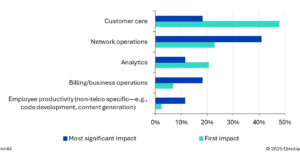
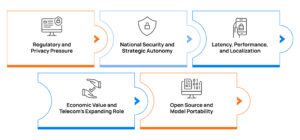
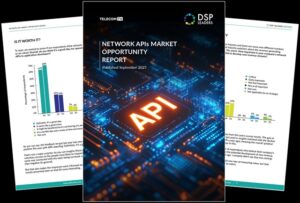
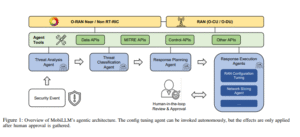
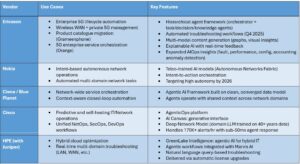
Be First to Comment